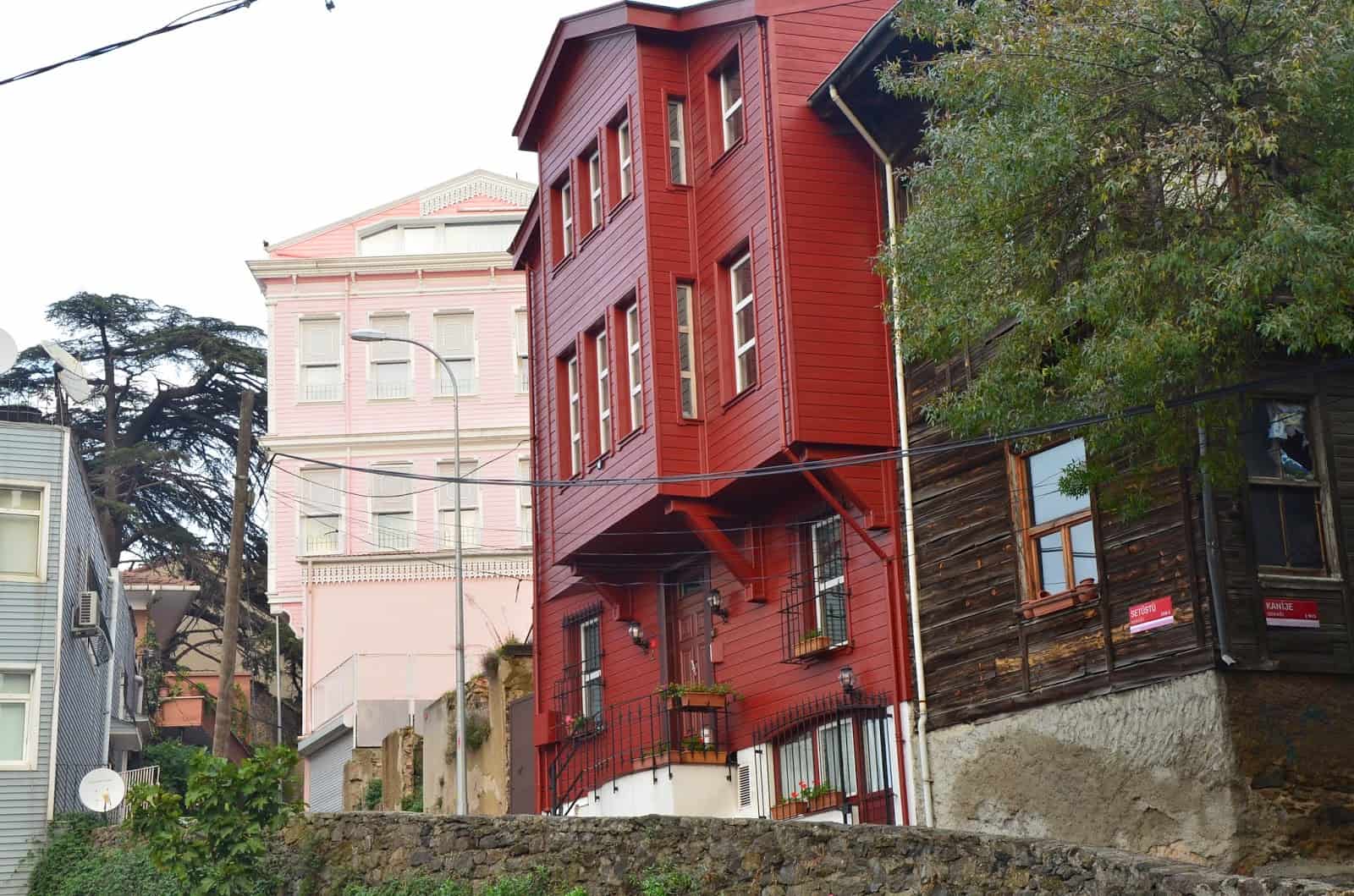Last updated on .
Anadolu Hisarı is a small village on the Asian side of the Bosporus in Istanbul, Turkey. It’s named after an Ottoman fortress located there.
Village
In the small village of Anadolu Hisarı, it’s possible to spot a few nicely restored Ottoman homes. The village during Byzantine times was called Potámion (Ποτάμειον), referring to two creeks passing through.

The Sweet Waters of Asia
The creeks are called Göksu Creek (Göksu Deresi) and Küçüksu Creek (Küçüksu Deresi) and were affectionately known by the Ottomans as “The Sweet Waters of Asia”. In a meadow between these two creeks, the 19th century Ottoman elite of old Constantinople would gather to pass the time away. It was a place of great natural beauty.
Nowadays, the natural beauty has been replaced with ugly modern apartment buildings and other structures stretching up into the once green hills. But to this day, any visitor to the area could imagine why this area would be called “The Sweet Waters of Asia” (although the water doesn’t look that sweet anymore).
In addition to being an Ottoman playground, there are two very important Ottoman structures from extremely different periods in Ottoman history located there. One is Anadolu Fortress in Anadolu Hisarı, and the other is Küçüksu Pavilion. Neither are often visited by tourists, but both are interesting and within easy walking distance of one another.
Anadolu Fortress
The oldest Turkish structure in Istanbul sits next to Göksu Creek. Anadolu Fortress (Anadolu Hisarı) is a small fortress built in 1394 by Sultan Bayezid I before his failed siege of Constantinople in 1395. Its original name was Güzelce Fortress (Güzelce Hisar), which literally translates to the Beauteous Fortress. It was built on top of an old temple dedicated to Ouranos.
The fortress is built in a strategic area of the Anatolian side of the Bosporus, at the narrowest point of the strait. It has five watchtowers, with the tallest one at 25 meters high. A small mosque sits in the center.
Anadolu Fortress was used as a military prison and customs house after the Fall of Constantinople. It has changed many times over the years and the original appearance has been lost. It was last restored between 1991 and 1993. Unfortunately, it’s closed to the public. Click here for a virtual tour.
Views of Rumeli Fortress
On the European side of the Bosporus, directly across from Anadolu Hisarı, you can see Rumeli Fortress. It was built in 1452 by Mehmed the Conqueror, just before the Fall of Constantinople. The construction of Rumeli Fortress and the successful conquest of Constantinople rendered Anadolu Fortress obsolete. Rumeli Fortress later became a military prison and then fell into disrepair.
Fatih Sultan Mehmet Bridge
The Fatih Sultan Mehmet Bridge (Fatih Sultan Mehmet Köprüsü) is the second bridge over the Bosporus. It lies just north of Anadolu Hisarı and was completed in 1988. At that time it was the fifth longest suspension bridge in the world.
Getting There
The easiest way to get to Anadolu Hisarı is through Üsküdar. Take a ferry to Üsküdar and walk to the Üsküdar Cami Önü stop (in front of the mosque across the street from the ferry terminal). Hop on pretty much any bus with a number 15 until you reach the Anadolu Hisarı stop. You can also take a dolmuş going to Beykoz and ask the driver to let you out at Anadolu Hisarı – it’s much faster than the bus.
If you’re on the European side, there’s a ferry service on the Istanbul City Ferry Lines (İstanbul Şehir Hatları) from either Arnavutköy or Bebek to Anadolu Hisarı every few hours throughout the day.